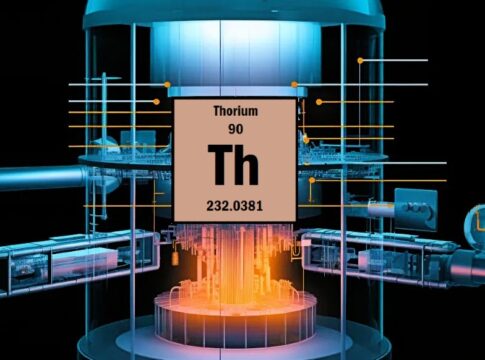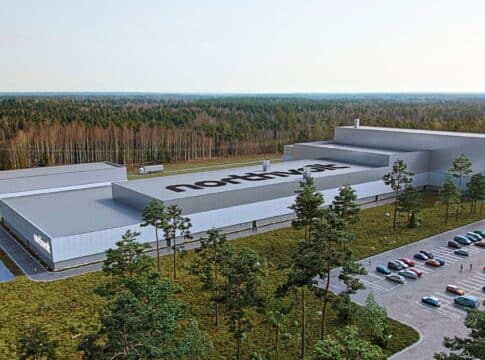New Fuel Powers Up India’s Green Nuclear Future
Revolutionizing the nuclear fuel landscape, a breakthrough innovation known as ANEEL (Advanced Nuclear Energy for Enriched Life) is gaining attention. Developed and patented by Mehul Shah, Founder and CEO of Clean Core Thorium Energy (CCTE), this fuel combines Thorium and High Assay Low Enriched Uranium (HALEU).
The United States Department of Energy (DOE), Idaho National Laboratory (INL), and the Nuclear Engineering & Science Center at Texas A&M worked with CCTE to develop ANEEL.
The Chicago-based company’s invention has the potential to reshape India’s green energy trajectory by facilitating the use of Thorium in nuclear reactors.
Thorium’s Role in Green Energy Solutions
India boasts the world’s largest thorium reserves, estimated at 1.07 million tonnes, sufficient for over a century. However, thorium, a fertile material, requires pairing with fissile materials like Uranium-235 or Plutonium-239 for reactor fuel.
Kailash Agarwal, Fuel Cycle Facilities Specialist at IAEA emphasized the importance of thorium in providing solutions to energy transition. He noted that:
“Because of its abundance and its fissile material breeding capability, thorium could potentially offer a long-term solution to humanity’s energy needs.”
Source: Lowery, Andrew et al, 2014.
The challenge lies in minimizing the use of precious uranium for this purpose. Clean Core’s ANEEL fuel addresses this issue by introducing a mix of Thorium and HALEU, enriching the Uranium content.
HALEU is a crucial material needed for many advanced reactor designs. A 20-kg HALEU was first produced by the Centrus Energy Corporation, the first of its kind in over 70 years.
The U.S. Department of Energy is investigating HALEU through its demonstration project in Piketon, Ohio in partnership with Centrus.
RELATED: How Nuclear Energy in the U.S. Got Its Groove Back
ANEEL can be integrated into existing Pressurized Heavy-Water Reactors (PHWRs), the backbone of India’s nuclear fleet. With 18 PHWR reactors already in operation and ten more under construction, ANEEL holds the potential to be a game-changer.
Unlike conventional reactors using uranium fuel enriched up to 5%, HALEU, enriched between 5% and 20%, is crucial for advanced nuclear reactor designs.
Currently, commercial HALEU production is limited. Only Russia and China are capable of producing HALEU at this scale. Given the risk at the demand side, suppliers aren’t all out in scaling up the production.
This is where Clean Core’s ANEEL innovation comes in. It offers a near-term path to commercialization, boosting confidence among suppliers.
Igniting India’s Nuclear Revolution
India’s thorium strategy involves creating a thorium blanket around uranium or plutonium reactors to convert thorium into uranium-233 as energy is produced.
ANEEL offers a more straightforward and quicker alternative, leveraging imported HALEU for thorium deployment. If adopted, ANEEL could accelerate India’s green energy transition, using its abundant thorium resources to achieve net zero by 2070.
Innovating the landscape of nuclear fuel, ANEEL not just offers an alternative for thorium but also brings about substantial benefits in terms of nuclear waste reduction and operational efficiency.
One of the major advantages of ANEEL is its ability to dramatically reduce nuclear waste volume and operating costs. The fuel bundle lasts much longer and burns more efficiently, with a burn-up of 60,000 MW-days per tonne. That’s much more efficient compared to the 7,000 MW-days per tonne of conventional natural uranium fuel in PHWRs.
This higher burn-up significantly impacts waste volumes and economic aspects of reactor operations.
When it comes to waste reduction, the comparison is also striking. Using natural uranium fuel in an existing 220 MW Indian PHWR, an average of 8 bundles would need daily replacement over the reactor’s 60-year lifespan. This totals about 175,000 bundles used.
Image from Clean Core
With ANEEL fuel, only 1 bundle would need daily replacement, resulting in 22,000 bundles used over the reactor’s lifetime. All these lead to significant waste reduction and cost savings.
Capturing the Global Nuclear Power Landscape
ANEEL’s unique composition of HALEU and Thorium provides inherent benefits, making the spent fuel unsuitable for weapons use. This gives reassurance to foreign uranium suppliers and reactor operators.
The technology has garnered international interest, with Canadian Nuclear Laboratories signing a Memorandum of Understanding (MoU) with Clean Core to support the development and deployment of ANEEL fuel.
This innovation could play a pivotal role in meeting the growing global demand for clean, baseload energy production. It strongly aligns with the goals outlined by countries at COP28 to triple nuclear capacity.
READ MORE: The Big News from COP28: Nuclear Energy’s Triumph
ANEEL fuel stands out in the nuclear power landscape with its proprietary combination of thorium and uranium, notably with HALEU. This distinctive fuel addresses multiple challenges associated with nuclear power, including cost, proliferation concerns, and waste management. Remarkably, being a product of American innovation, ANEEL fuel holds the potential for export to emerging nuclear markets.
The post New Fuel Powers Up India’s Green Nuclear Future appeared first on Carbon Credits.



